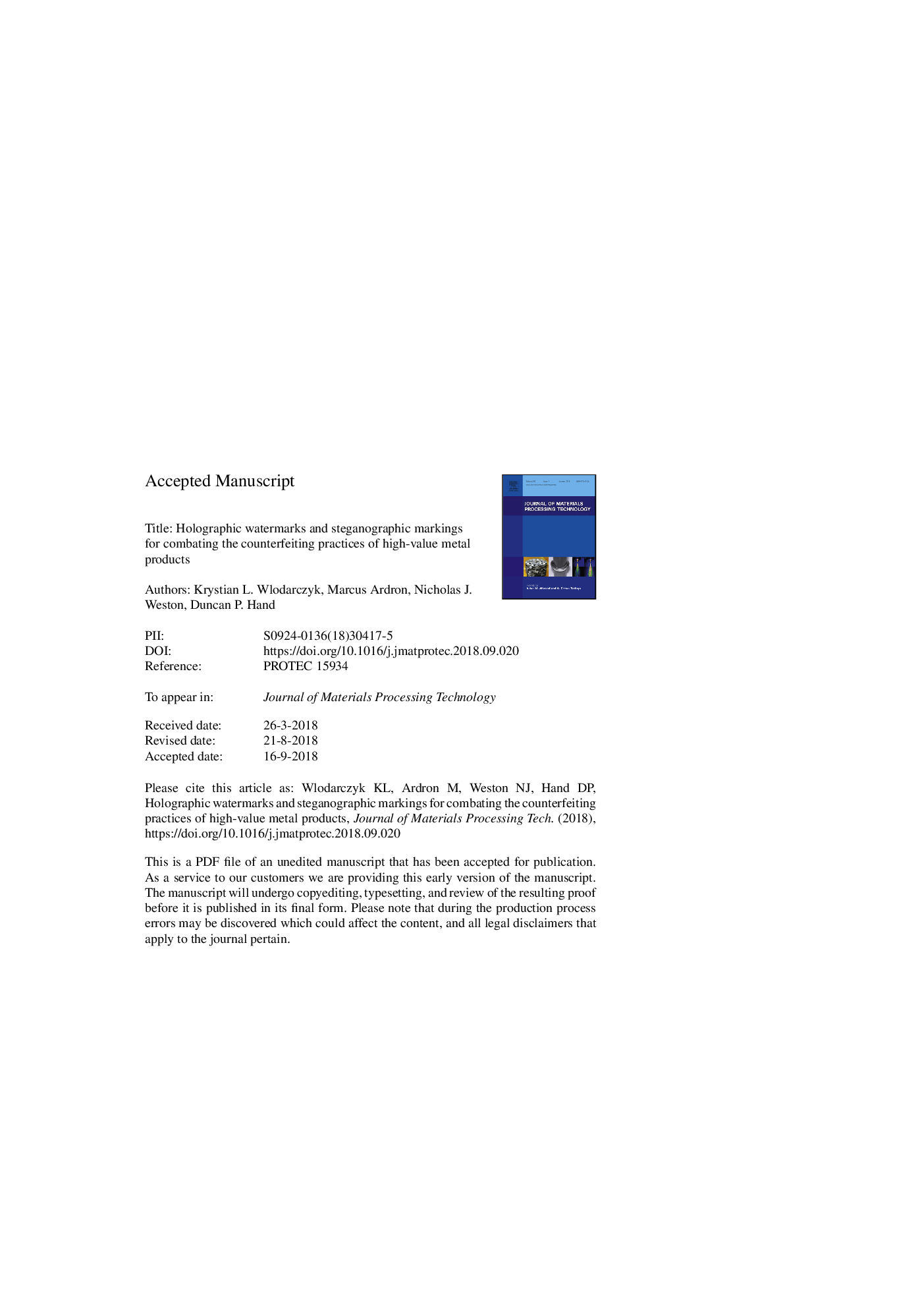| کد مقاله | کد نشریه | سال انتشار | مقاله انگلیسی | نسخه تمام متن |
|---|---|---|---|---|
| 11029882 | 1646413 | 2019 | 26 صفحه PDF | دانلود رایگان |
عنوان انگلیسی مقاله ISI
Holographic watermarks and steganographic markings for combating the counterfeiting practices of high-value metal products
ترجمه فارسی عنوان
علامت های هولوگرافی و نشانه های استیگانگرافی برای مبارزه با تقلبی از محصولات فلزی با ارزش
دانلود مقاله + سفارش ترجمه
دانلود مقاله ISI انگلیسی
رایگان برای ایرانیان
کلمات کلیدی
پردازش مواد لیزری، مارک امنیتی، ساخت میکروارگانیسم، هولوگرام های کامپیوتری، فلزات،
موضوعات مرتبط
مهندسی و علوم پایه
سایر رشته های مهندسی
مهندسی صنعتی و تولید
چکیده انگلیسی
This paper describes recent advances in laser direct writing of tamper-proof holographic structures on metal surfaces for preventing counterfeiting of high-value metal products, e.g. luxury watches, medical tools and implants, collectible coins, etc. Each of these holographic structures consists of an array of optically-smooth craters arranged in such a way to generate diffractive images comprising, e.g. a company logo and/or a string of alphanumeric characters, providing a unique method for the traceability of genuine products. The craters are less than 10âμm across and less than 500ânm deep. They are generated on metals by UV nanosecond laser pulses (355ânm wavelength and 35âns pulse duration) that lead to localized melting and evaporation of the material. This paper demonstrates various methods for combining the holographic structures with standard marking patterns, such as QR codes and Data Matrices, in order to form aesthetic holographic markings concealing secret messages about the products. By merging a few holographic patterns together it is also possible to generate so called “holographic watermarks”. Finally, this article describes a few approaches for making the holographic structures particularly difficult to replicate and counterfeit. This includes the generation of multi-level holograms as well as the formation of optically-smooth protrusions (bumps) in selected places within the holographic structures in order to create hidden identifiers and/or miniature signatures which cannot be detected by the naked eye.
ناشر
Database: Elsevier - ScienceDirect (ساینس دایرکت)
Journal: Journal of Materials Processing Technology - Volume 264, February 2019, Pages 328-335
Journal: Journal of Materials Processing Technology - Volume 264, February 2019, Pages 328-335
نویسندگان
Krystian L. Wlodarczyk, Marcus Ardron, Nicholas J. Weston, Duncan P. Hand,
